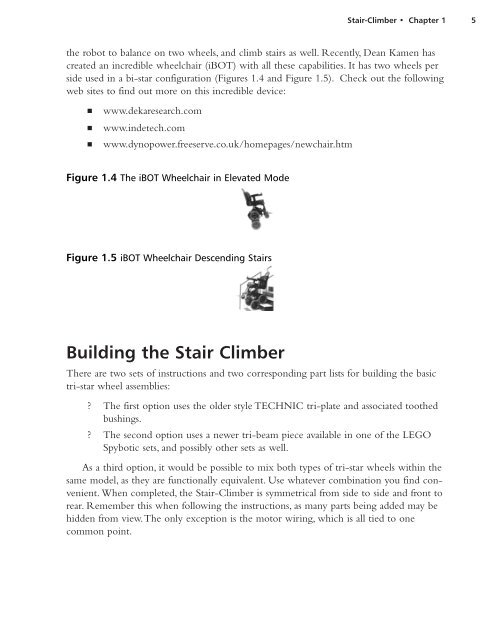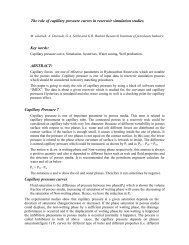You also want an ePaper? Increase the reach of your titles
YUMPU automatically turns print PDFs into web optimized ePapers that Google loves.
<strong>Stair</strong>-<strong>Climber</strong> • Chapter 1 5<br />
the robot to balance on two wheels, and climb stairs as well. Recently, Dean Kamen has<br />
created an incredible wheelchair (iBOT) with all these capabilities. It has two wheels per<br />
side used in a bi-star configuration (Figures 1.4 and Figure 1.5). Check out the following<br />
web sites to find out more on this incredible device:<br />
■<br />
■<br />
■<br />
www.dekaresearch.com<br />
www.indetech.com<br />
www.dynopower.freeserve.co.uk/homepages/newchair.htm<br />
Figure 1.4 The iBOT Wheelchair in Elevated Mode<br />
Figure 1.5 iBOT Wheelchair Descending <strong>Stair</strong>s<br />
Building the <strong>Stair</strong> <strong>Climber</strong><br />
There are two sets of instructions and two corresponding part lists for building the basic<br />
tri-star wheel assemblies:<br />
? The first option uses the older style TECHNIC tri-plate and associated toothed<br />
bushings.<br />
? The second option uses a newer tri-beam piece available in one of the LEGO<br />
Spybotic sets, and possibly other sets as well.<br />
As a third option, it would be possible to mix both types of tri-star wheels within the<br />
same model, as they are functionally equivalent. Use whatever combination you find convenient.<br />
When completed, the <strong>Stair</strong>-<strong>Climber</strong> is symmetrical from side to side and front to<br />
rear. Remember this when following the instructions, as many parts being added may be<br />
hidden from view.The only exception is the motor wiring, which is all tied to one<br />
common point.
















